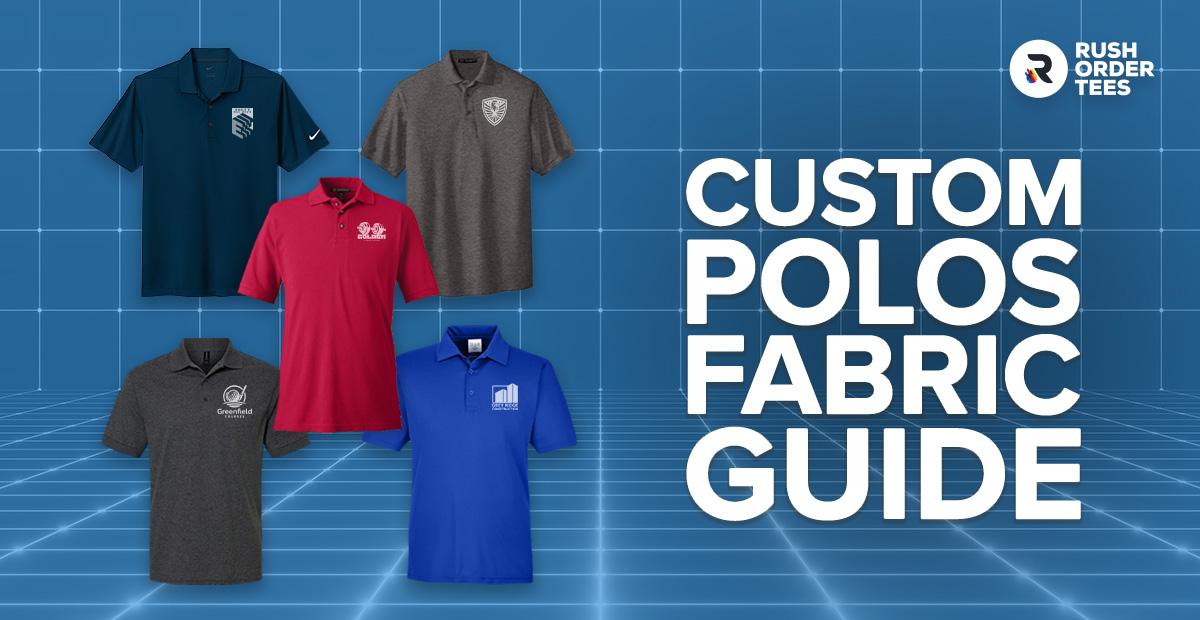

Custom polo shirts elevate the classic T-shirt into something sharper and more refined. They're among our most popular items because they work everywhere—from corporate offices and golf courses to restaurants and retail shops. Your choice of fabric determines how these polos perform, whether they'll stay crisp through a full day of customer meetings, keep you cool during a round of golf, or hold up after dozens of washes. Let's break it all down.
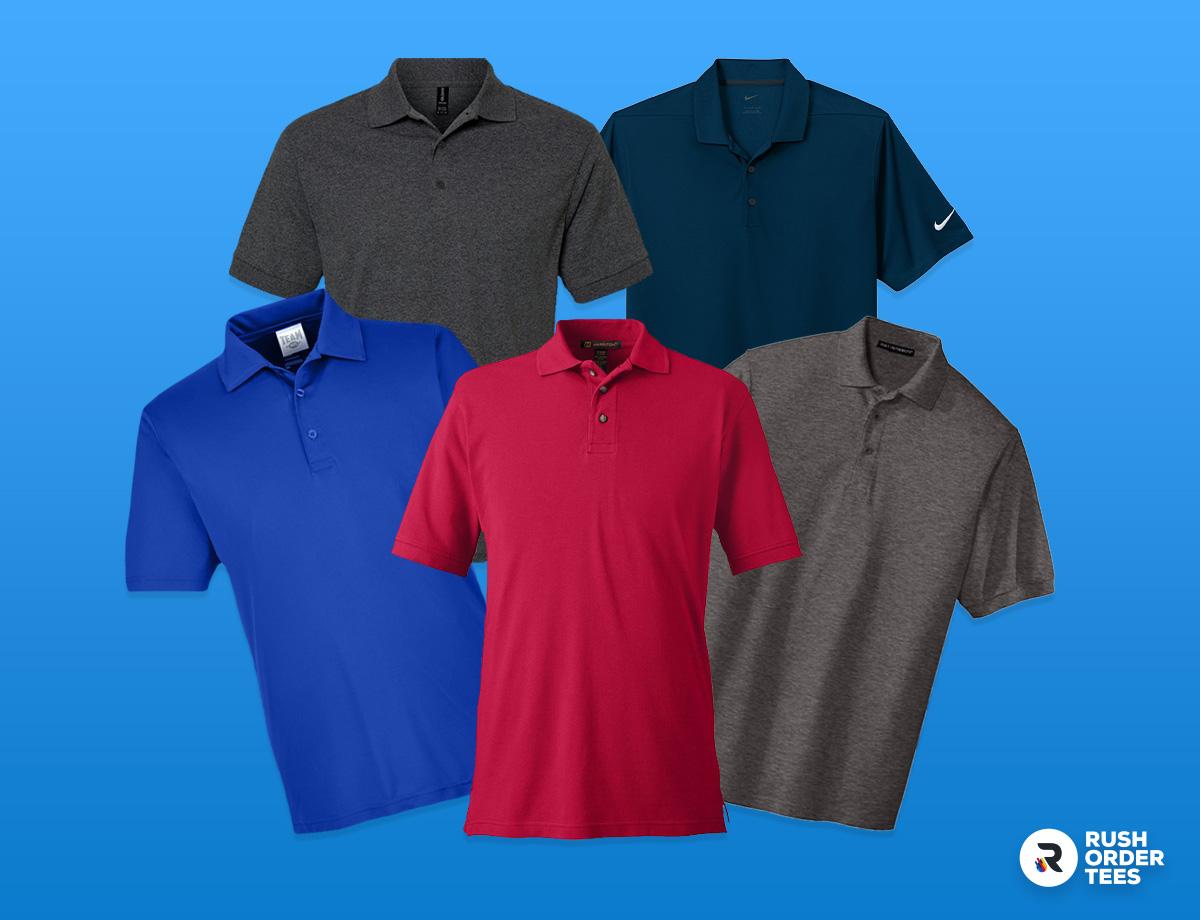
Common Polo Shirt Fabrics
Polo shirt fabrics fall into two main camps: natural fibers like cotton and synthetic materials like polyester. While some polos stick to one or the other, many combine both in various blends to capture specific benefits; cotton's natural comfort with polyester's durability, for example. These fabrics also come in different knits and weights, from traditional piqué to smooth jersey, each offering distinct performance characteristics. Let's review the most common fabric options to help you find your perfect match.
Cotton

Cotton polos deliver unmatched softness and breathability, with a natural feel that gets more comfortable with each wash. This traditional fabric wicks moisture naturally and provides excellent airflow, helping regulate temperature in various conditions. Premium cotton varieties like Pima and Supima offer exceptional smoothness and durability, while standard cotton maintains reliable comfort at a more accessible price point.
Ideal for: Cotton excels in professional environments where comfort and polish matter most. It's perfect for office wear, client meetings, hospitality staff, and upscale retail environments. The fabric's natural drape and refined appearance make it especially popular for business casual settings, while its breathability serves well for outdoor events and out on the golf course where temperature regulation is crucial.
Considerations: Keep in mind that cotton may shrink slightly after washing, typically 2-3% when properly cared for. It can wrinkle more easily than synthetic fabrics, though many cotton polos now feature wrinkle-resistant treatments. While cotton takes longer to dry than synthetics, this slower drying actually helps with temperature regulation during wear.
Customization: Cotton polos handle embroidery beautifully, particularly on the left chest and sleeve locations. The stable fabric provides an excellent foundation for detailed logos and text, maintaining stitch quality through repeated washing. While screen printing works well for smaller designs, large prints aren't recommended as they can affect the fabric's natural breathability and drape. Heat transfers and DTF printing offer additional options for lighter-weight cotton polos.
Polyester

Polyester polos deliver exceptional durability and moisture-wicking performance that maintains effectiveness wash after wash. The fabric resists wrinkles, holds its shape, and keeps colors vibrant far longer than natural fibers. Modern polyester has evolved well beyond its scratchy reputation, with advanced weaving techniques creating smooth, comfortable fabrics that rival cotton's feel.
Ideal for: These polos shine in high-activity environments where sweat management and easy care matter most. They're ideal for sports teams, fitness facilities, outdoor workers, and service industry staff who need uniforms that stay fresh through long shifts. The fabric's quick-drying nature and color retention make it perfect for demanding environments, while its durability stands up to frequent washing.
Considerations: The main trade-off with polyester is reduced breathability compared to cotton, though performance variations help offset this. Some people find pure polyester less comfortable in high heat, and the fabric can develop static cling in dry conditions. Premium polyester polos often cost more than basic cotton, but their longevity typically justifies the investment.
Customization: Polyester accepts both embroidery and printing exceptionally well. The smooth surface produces crisp, vibrant prints, while stable fabric structure supports detailed embroidery without puckering. Left chest embroidery remains the most popular choice for corporate and team wear, though sleeve and collar designs work equally well. When using heat transfers, lower temperatures prevent fabric damage while ensuring design durability.
Cotton-Poly Blends

Cotton-poly blends combine natural comfort with synthetic durability, typically mixing fibers in ratios like 50/50, 60/40, or 65/35. These blends minimize cotton's tendency to shrink and wrinkle while maintaining its softness, and add polyester's moisture-wicking and color retention. The result? Polos that feel great, look sharp, and handle regular wear without demanding special care.
Ideal for: Blended polos work perfectly for everyday business wear, uniforms, and team apparel, where you need both comfort and longevity. They're especially popular in retail, hospitality, and customer service roles where staff interact with clients all day. Schools and corporate teams often choose blends because they maintain a professional appearance through heavy rotation while keeping costs reasonable.
Considerations: The compromise with blends comes in breathability - they don't quite match pure cotton's airflow but perform better than straight polyester. Higher polyester ratios can sometimes create static cling, while higher cotton content may show more wrinkles. However, most users find these minor trade-offs worth the improved durability and easier care.
Customization: These fabrics offer excellent customization flexibility. The balanced fiber content creates a stable surface for embroidery, particularly for left chest and collar designs. Screen printing produces vibrant results, and heat transfers adhere well without damaging the fabric. While large designs aren't typically recommended, the material handles standard logo placement better than pure cotton or polyester alone.
Performance Fabrics

Performance fabrics represent the cutting edge of polo shirt technology, combining polyester, spandex, and other synthetics with advanced knitting techniques. These engineered materials feature specialized moisture-wicking channels that pull sweat away from skin more effectively than standard fabrics. Many incorporate four-way stretch, UV protection, and anti-microbial treatments, while maintaining a crisp, professional appearance.
Ideal for: These polos excel in high-intensity environments where movement and moisture management are crucial. Golf professionals, athletic trainers, outdoor workers, and active sales teams choose performance fabrics for their superior comfort during long days. They're particularly effective for corporate athletic events, tennis clubs, and any situation where you need to look polished while staying cool and dry.
Considerations: While performance fabrics cost more than traditional materials, their specialized features justify the investment. Some wearers find these synthetics less breathable in extreme heat, though advanced knitting patterns help offset this. The fabrics can occasionally build static charge in dry conditions, and some may require specific washing instructions to maintain their technical properties.
Customization: These high-tech fabrics typically work best with heat transfer or direct-to-film printing, especially for lightweight performance materials. While embroidery remains popular for left chest logos, too many stitches can compromise the fabric's stretch and moisture-wicking properties. Small, strategic logo placement preserves both function and style without affecting the garment's performance capabilities.
Eco-Friendly Fabric
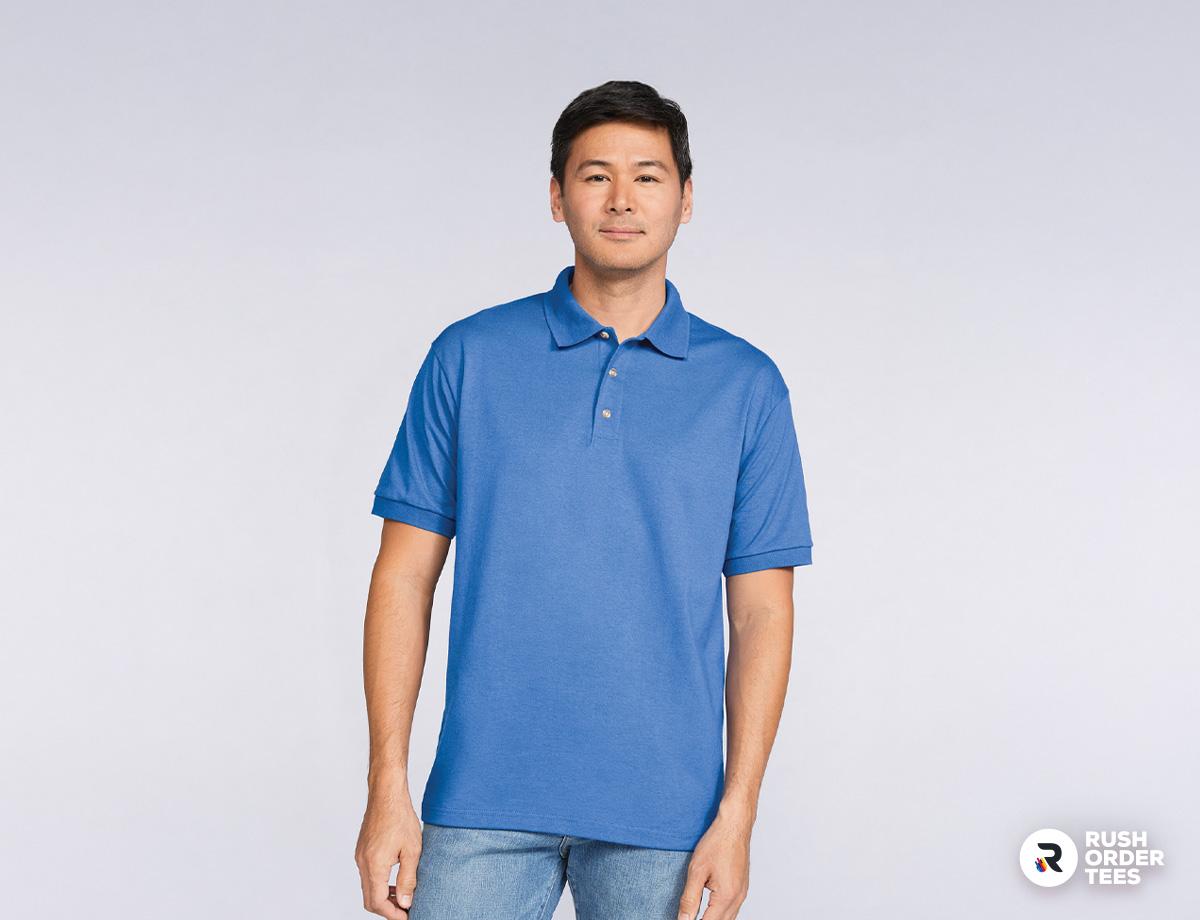
Eco-friendly polo fabrics include organic cotton, recycled polyester (often made from plastic bottles), and innovative blends that minimize environmental impact. Beyond raw materials, these fabrics often feature sustainable production methods, water-saving technologies, and ethical labor practices. Some manufacturers now offer polos made from post-consumer cotton waste or biodegradable synthetics, providing premium quality while reducing landfill impact.
Ideal for: These sustainable options appeal strongly to environmentally conscious businesses, particularly in tech, outdoor recreation, and modern retail. They're perfect for companies looking to align their uniforms with their environmental values, as well as events and organizations focused on sustainability. The growing demand for eco-friendly corporate wear has made these fabrics increasingly popular for office environments and customer-facing teams.
Considerations: While eco-friendly polos typically cost more than conventional options, their quality and environmental benefits often outweigh the price difference. Some recycled materials may feel slightly different from traditional fabrics, though manufacturing improvements continue to narrow this gap. Availability can be more limited, especially for specific colors or styles, but options expand as demand grows.
Customization: Most eco-friendly polos accept standard decoration methods, though testing is always recommended. Organic cotton takes well to embroidery and screen printing, while recycled polyester handles heat transfers beautifully. Left chest logos remain the most popular placement, with some brands offering water-based inks and other sustainable decoration options to maintain environmental consistency throughout the customization process.
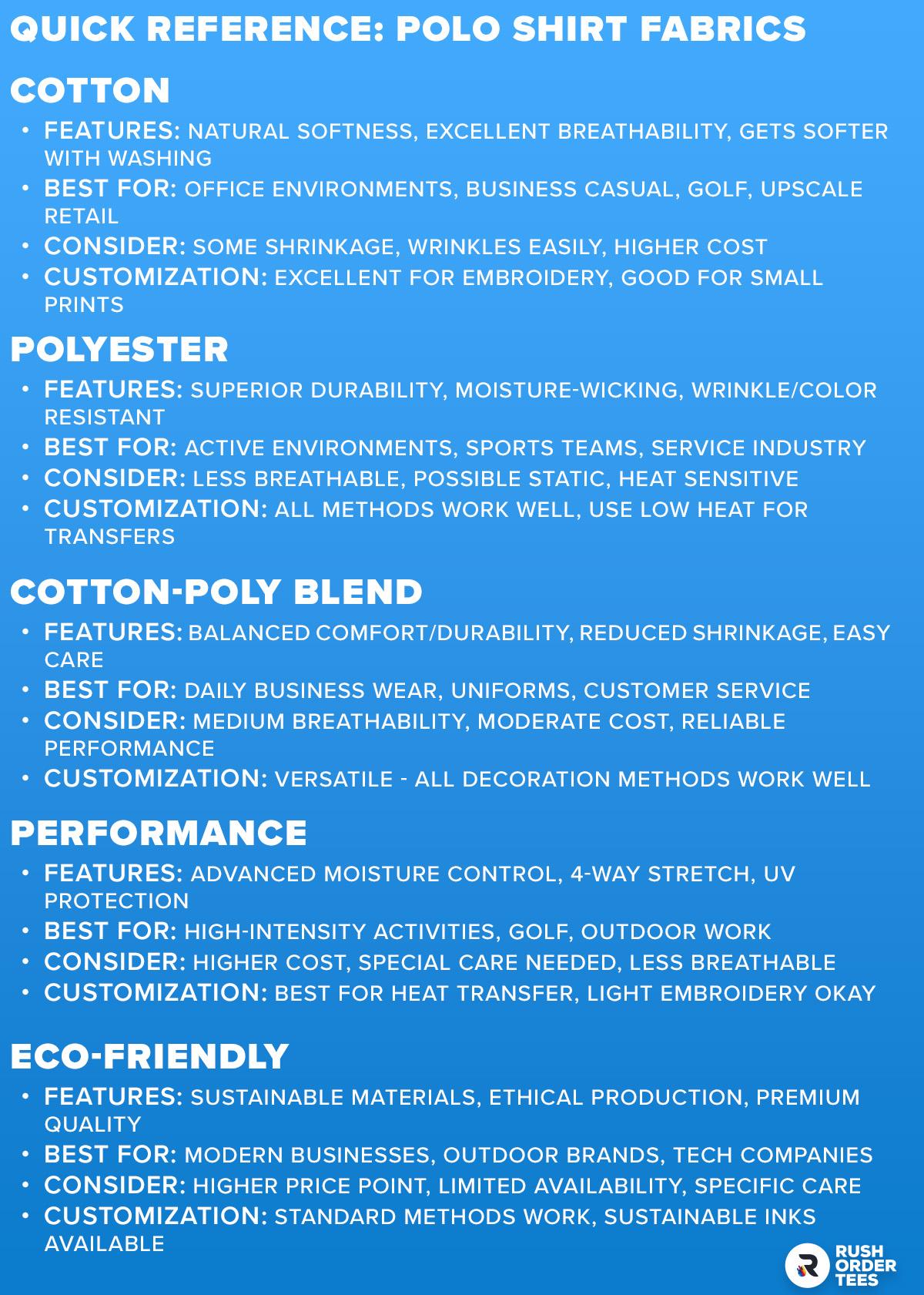
Fabric Weaves and Textures
While performance polos come in various specialized knits engineered for specific activities, two main fabric constructions dominate the custom polo market: piqué and jersey knit. Each offers distinct advantages for different uses and decoration methods. Let's look at how these classic weaves differ in both form and function.
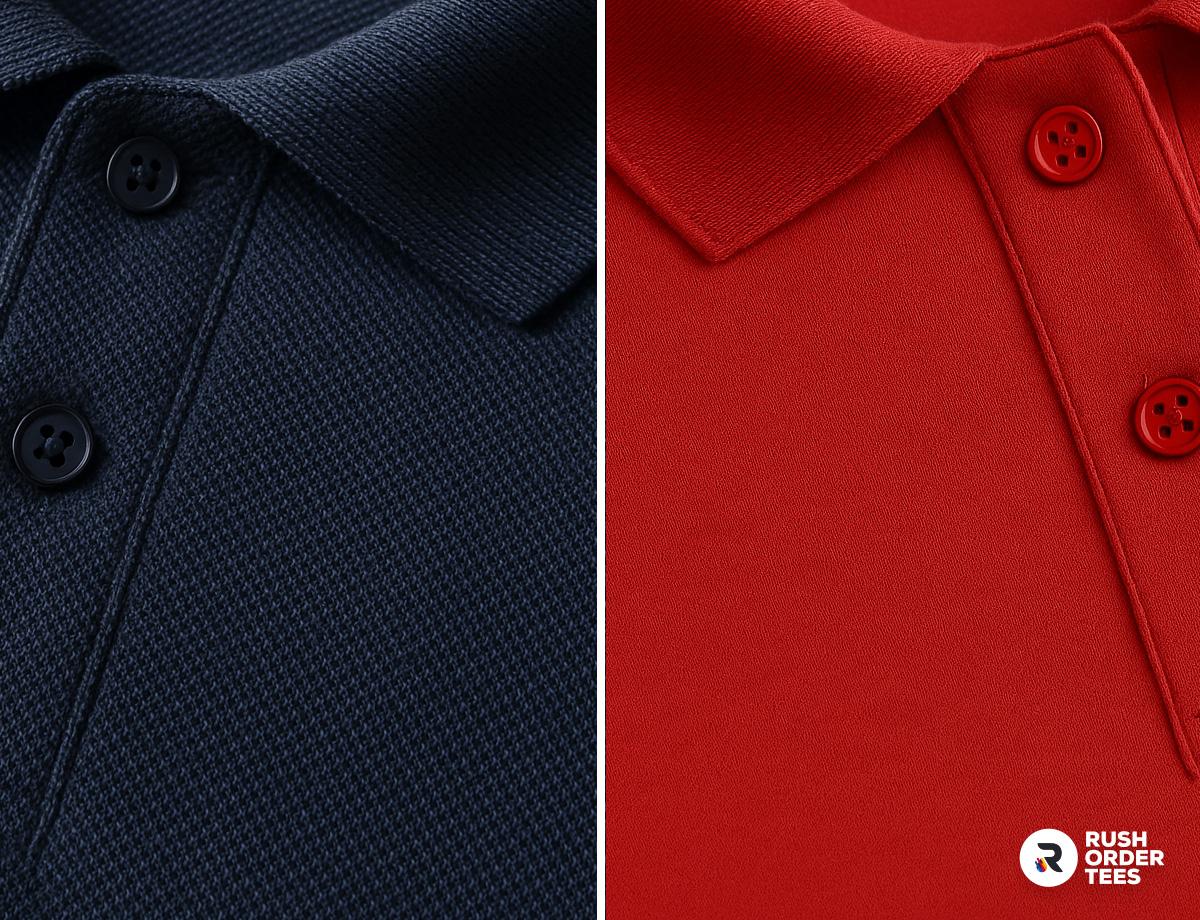
Piqué Knit
The traditional polo shirt texture, piqué polos feature a distinctive waffle-like pattern created by raised geometric threads. This sturdy, textured surface provides excellent durability and helps hide minor wear while maintaining a crisp, professional appearance. Piqué's structured nature makes it ideal for embroidered polos, particularly for left chest logos and collar designs, though its texture can interfere with the clarity of printed designs.
Jersey Knit
Smoother and more like a t-shirt, jersey knit polos offer a softer, more casual feel. This versatile construction adapts well to both athletic and fashion applications, with excellent drape and natural stretch. Jersey knit accepts all decoration methods equally well, from embroidery to screen printing, making it particularly versatile for custom designs. Modern variations include heathered effects and tri-blends that add visual interest while enhancing comfort and performance.
Choosing the Right Polo Fabric for Your Needs
Selecting the right fabric for your custom polos depends largely on how they'll be used. Here's a quick guide to match your needs with the ideal materials:
- Corporate & office wear: Cotton-poly blends or premium cotton piqué provide professional appearance and reliable durability. These fabrics resist wrinkles and maintain shape through regular washing, perfect for daily business wear. Example: Peter Millar Solid Performance Polo
- Customer service & retail staff: Performance blends or lightweight cotton-poly combinations offer comfort during long shifts while keeping staff looking sharp. Quick-drying properties help maintain freshness through active customer interactions. Example: Gildan DryBlend® Jersey Sport Polo
- Sports & athletics: Performance fabrics with advanced moisture-wicking and stretch properties keep athletes comfortable and focused. Look for specialized knits with UV protection for outdoor sports, especially golf and tennis. Example: Nike Dri-Fit Vertical Mesh Polo
- Promotional events: Affordable cotton-poly blends balance quality and cost-effectiveness for large orders. Choose lighter weights for summer events, heavier for cool weather functions. Example: Jerzees Spotshield Polo
- Food service & hospitality: Durable polyester or poly-blend fabrics resist stains and maintain appearance through frequent washing. Dark colors and patterns help hide wear in demanding environments. Example: Core 365 Origin Performance Piqué Polo
- Outdoor work: Performance fabrics with UV protection and moisture management keep teams comfortable in varying conditions. Consider weight based on climate; lighter for warm regions, heavier for cooler areas. Example: Sport-Tek Posi-UV Pro Polo
- Casual & fashion retail: Soft jersey knits or premium cotton options prioritize style and comfort. Heathered effects and tri-blends offer modern appeal for retail merchandise. Example: TravisMathew Coto Performance Polo
- Eco-conscious organizations: Organic cotton or recycled polyester options align with sustainable values while maintaining professional appearance. Perfect for companies prioritizing environmental responsibility. Example: Cutter & Buck Virtue Eco Pique Recycled Polo
- Hot weather use: Lightweight performance fabrics or jersey knits maximize airflow and moisture-wicking. Look for specialized cooling technologies in performance blends. Example: Team 365 Men's Zone Performance Polo Shirt
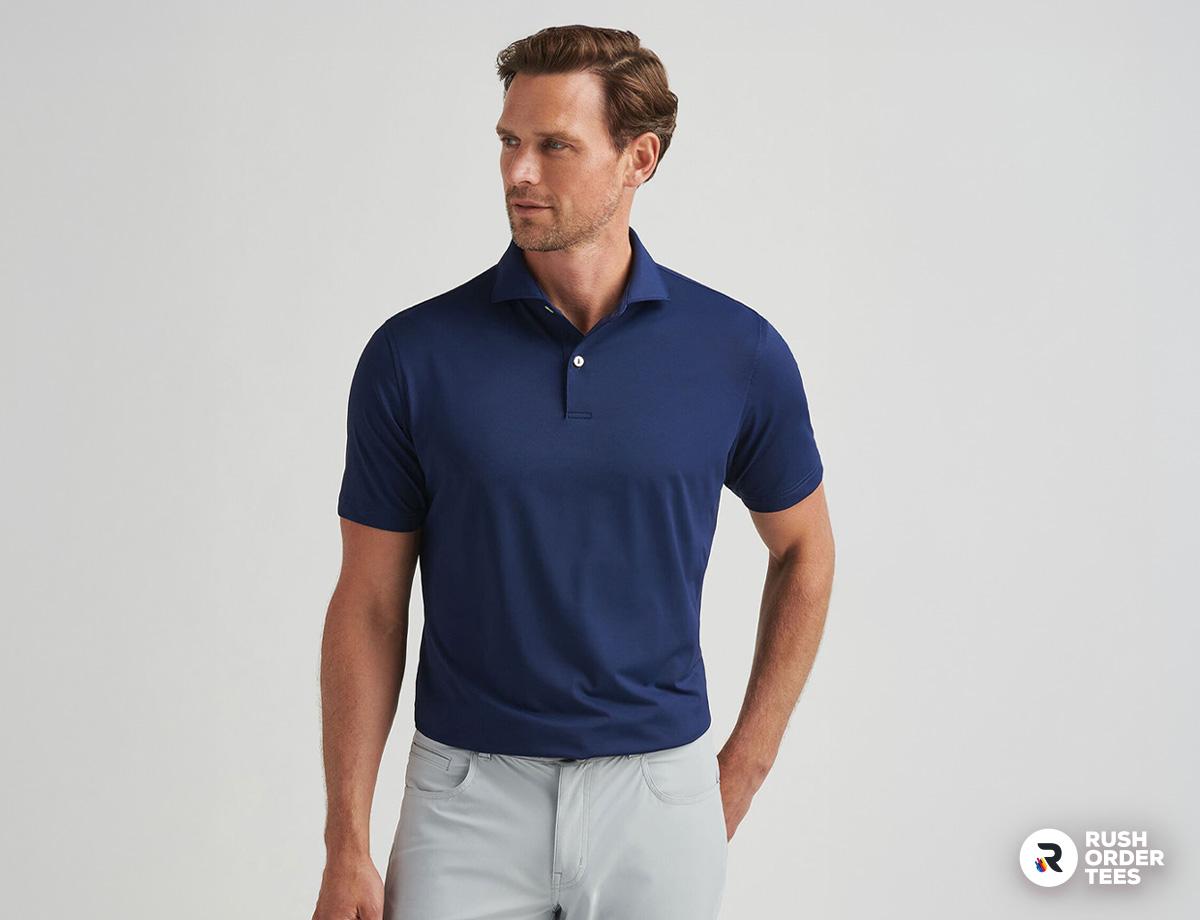
Care & Maintenance Tips
- Read care labels first: Different performance technologies and fabric blends may require specific care. Always check the tag before the first wash.
- Turn polos inside out: This protects logos and decorations while reducing wear on the outer surface. Especially important for dark colors and printed designs.
- Wash in cool or warm water: Hot water can damage synthetic fibers and cause shrinkage in cotton. Stick to temperatures below 104°F (40°C).
- Skip harsh chemicals: Avoid bleach and fabric softeners. They can break down performance properties and damage decorations. Use mild detergent instead.
- Dry with care: Tumble dry on low heat or hang dry to prevent shrinkage and protect fabric performance. Remove promptly to minimize wrinkles.
- Iron when needed: Use medium heat and iron inside out to protect logos. Check the label for performance fabrics; some shouldn't be ironed at all.
- Store properly: Hang on padded hangers to maintain shape. Avoid storing in direct sunlight, which can fade colors over time.
- Wash similar items together: Partner your polos with like colors and fabrics to prevent damage from zippers, hooks, or rough materials.
- Address stains quickly: Treat spots as soon as possible with gentle stain removers, following fabric care instructions.
- Maintain decoration: For embroidered logos, avoid ironing directly over stitching. For printed designs, turn inside-out before drying to prevent cracking.

Finding Your Perfect Polo Fabric
Choosing the right fabric for your custom polos directly impacts their performance, whether you're outfitting a sales team, creating merchandise, or ordering uniforms. Cotton delivers natural comfort, polyester provides lasting durability, and modern blends offer the best of both worlds. Performance fabrics add specialized capabilities for active uses, while eco-friendly options align with sustainable values.
Consider your specific needs, from work environment and activity level to decoration preferences and care requirements. The perfect polo balances these factors with your budget and practical demands. When you’re ready to create custom polos that work as hard as you do, browse our full selection of custom polo shirts and start designing with confidence.

About the Author
A graduate of the Multimedia program at the University of the Arts in Philadelphia, Imri Merritt is an industry veteran with over 20 years of graphic design and color separations experience in the screen printing industry.
